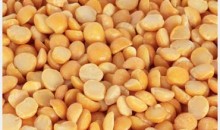BRISBANE: +61 7 350 36778 MELBOURNE : +61 3 994 84091 SYDNEY: +61 2 802 28423

There are two groups of Chickpea – Desi and Kabuli, mainly distinguished by seed size, shape and colour.
They also have different growth requirements, markets and end-users;
The plant is erect and freestanding, ranging in height from 15 to 60cm although well-grown plants may reach 80cm. They have a fibrous taproot system, a number of woody stems forming from the base, upper secondary branches and fine, frond-like leaves. Each leaflet has a thick covering of glandular hairs that secrete a strong acid (malic) particularly during pod-set, and this provides some protection from insets. The plant can derive more than 70% of its nitrogen from symbiotic nitrogen fixation
Yields are best in areas with reliable seasonal rainfall and mild spring conditions during seed filling. They are well suited to well-drained, non-acidic soils of a medium to heavy texture.
Nutritional Information
Chickpeas are a very good source of carbohydrates and proteins which altogether constitute about 80% of the total dry seed weight. Starch, which is the principal carbohydrate component, varies in content from 41-50% and is lower in Desi varieties than in Kabuli varieties. Total seed carbohydrates vary from 52-71%. The crude protein content of chickpea varieties ranges from 16-24%. Crude fibre, an important constituent of chickpeas is mostly located within the seed coat.
Based on amino acid composition, the proteins of chickpea seed were found, on average, to be of higher nutritive value than those of other grain legumes. Chickpeas meet adult human requirements for all essential amino acids except methionine and cysteine, and have a low level of tryptophan. Chickpeas have a high protein digestibility and are richer in phosphorus and calcium than other pulses.


